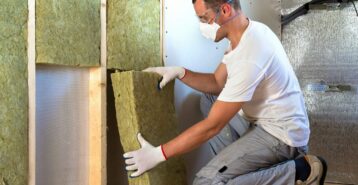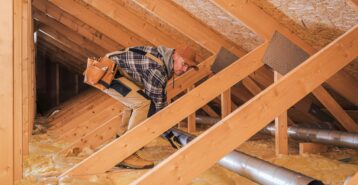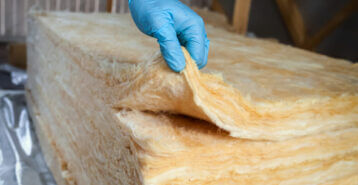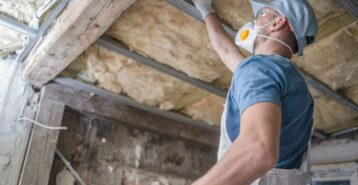What Is a Crawl Space?
A crawl space is a shallow area beneath a home that allows access to your home’s plumbing, wiring, and HVAC systems. Different from a basement, these spaces are typically between 18 and 36 inches in depth. Crawl spaces often have concrete walls and dirt floors and are accessed either through your home or outside the home through a type of door or hatch.
Key Differences:
- Crawl Space vs. Basement: Basements are full-height spaces underneath the first floor of your home and the ground. Basements, finished or unfinished, are considered livable spaces, while crawl spaces only provide access to critical systems and act as a buffer between the home and the earth.
- Crawl Space vs. Slab Foundation: Slabs are solid concrete layers that homes rest on. Slabs act as a barrier between the first floor of a home and the earth. They do not offer access beneath the home to plumbing or wiring.
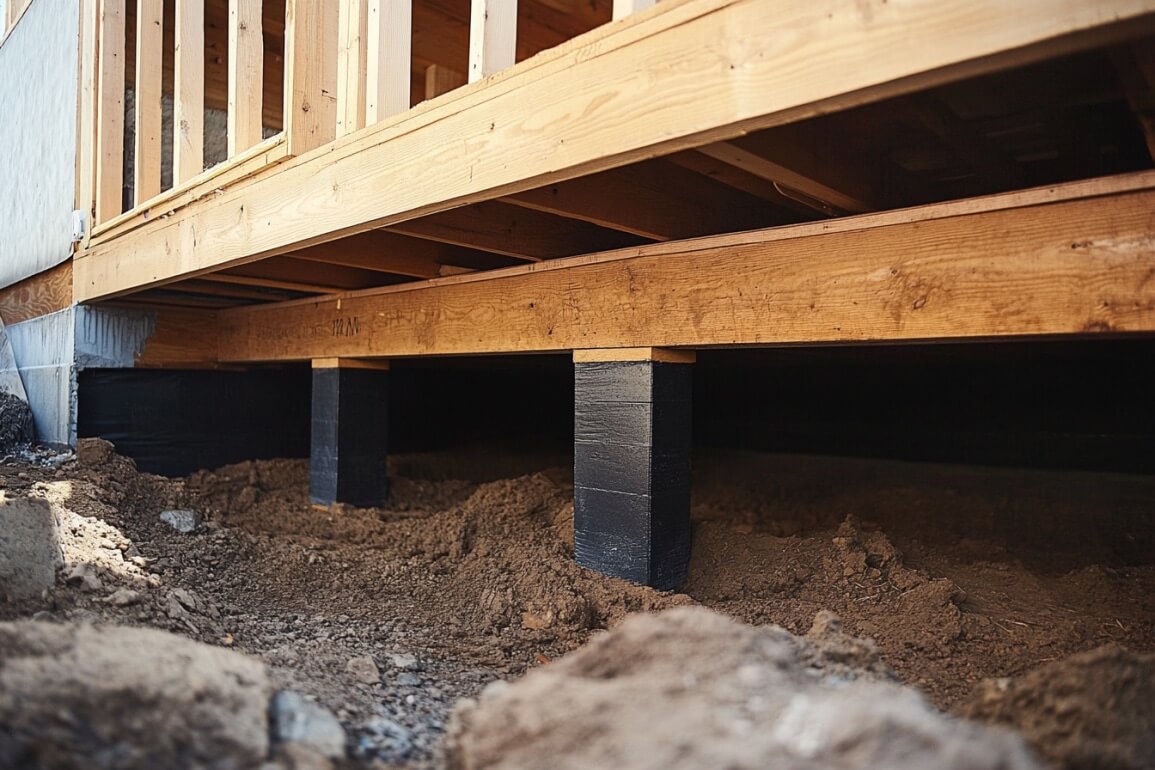
Types of Crawl Spaces
There are generally two types of crawl spaces: vented and unvented (sealed) crawl spaces.
Vented Crawl Spaces
Vented crawl spaces have open vents that offer access for outdoor airflow. These spaces are typically considered less energy efficient, especially in hot, humid, or extremely cold climates, because homes must regulate internal temperature. If not managed properly, vented crawl spaces can become problematic as they are prone to moisture problems.
Unvented Crawl Spaces
Unvented crawl spaces are completely sealed against the outdoors and have insulation along their walls. These are considered more energy efficient because they are less susceptible to outdoor temperatures and weather. They are best in warm and humid climates where homes require good moisture and temperature control.
Do You Need Crawl Space Insulation?
Because crawl spaces are the only barrier between your home and the earth, they often require special upkeep. You may need insulation if:
- Your home’s main-level floors feel cold to the touch in winter.
- Your energy bills are higher in winter because your HVAC system has to work harder.
- Your home feels excessively humid in summer due to warm air rising from the crawl space.
- You notice musty odors, mold, or visible signs of moisture.
- You see pests like insects or rodents that could be entering through the crawl space.
Pros and Cons of Insulating Your Crawl Space
If you notice any of the above concerns, you’ll see many benefits from insulating your crawl space, including:
- Improved Energy Efficiency: Insulation reduces heating and cooling loss.
- Better Moisture Control: Prevent condensation and mold from forming.
- Enhanced Comfort: Warmer floors and more stable indoor temperatures.
- Pest Deterrence: Sealing and insulating deters insects and rodents.
- Structural Protection: Prevents moisture-related structural damage.
- Increased Home Value: A well-insulated crawl space is more appealing to buyers.
Cons of Insulating a Crawl Space
- Upfront Cost: Can be pricey, especially with professional help.
- Potential for Trapped Moisture: If not properly sealed, moisture can build up.
- Maintenance Required: Occasional checks for moisture or damage are still needed.
- Not a DIY Job for Everyone: Requires tools, safety gear, and some know-how.
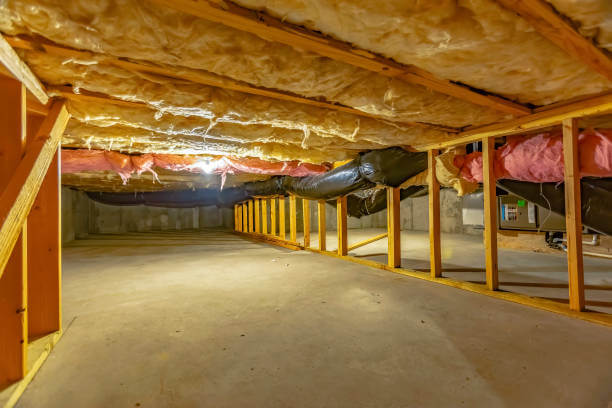
Best Insulation for a Crawl Space
The best insulation depends on your crawl space type and local climate. Here is a roundup of the most common types, their pros and cons, and costs:
Spray Foam Insulation
Expands on impact to seal gaps and insulate. Best for unvented or sealed crawl spaces.
- Cost: $0.40 to $1.50 per square foot
- Pros: Excellent air/moisture seal, high R-value, long-lasting
- Cons: Expensive, hard to DIY, must be applied correctly
Rigid Foam Panels
Solid insulation boards applied to walls. Best for sealed crawl spaces with concrete or block walls.
- Cost: $0.25 to $2 per square foot
- Pros: Moisture resistant, easy to install, durable
- Cons: Must be sealed at edges, takes effort to cut/fit, not ideal for all spaces
Fiberglass Batts
Common insulation in roll or sheet form. Best for vented spaces in drier climates.
- Cost: $0.30 to $1.50 per square foot
- Pros: Widely available, affordable, easy to install
- Cons: Absorbs moisture, loses effectiveness if wet, may sag or fall over time
Cost to Insulate a Crawl Space
Expect to pay $0.30 to $2 per board foot. A 1,000-square-foot crawl space will cost $300 to $2,000 in insulation materials alone. Prices vary by material and location.
DIY vs. Pro Install
Doing it yourself can save money — most homeowners spend between $300 and $2,000 on insulation materials for a 1,000-square-foot crawl space. This option requires more effort and time but gives you control over materials and labor.
Hiring a professional typically costs between $1,000 and $8,000. While it’s more expensive, a pro can complete the job faster and more safely. You’ll also benefit from their expertise in sealing and insulating the space properly, especially if you’re dealing with moisture issues or using more technical materials like spray foam.
Other Cost Factors
- Type of insulation used
- Condition of existing insulation
- Crawl space access
- Moisture or pest issues
- Need for vapor barriers
Maintenance Costs
Plan to spend up to $300 a year on annual inspections. Re-sealing and re-insulating damaged areas can range from $200 to over $1,000, depending on severity. Some home insurance policies may cover preventative measures.
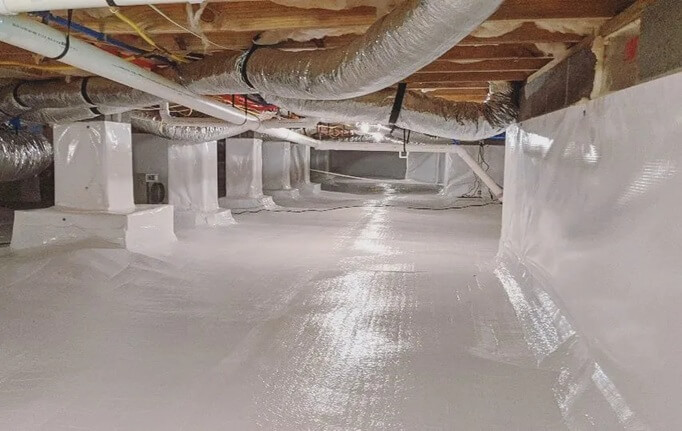
Step-By-Step: How to Insulate a Crawl Space
If you’re considering insulating your crawl space, this is how you do it:
Preparing the Space
Remove old insulation and debris. Address leaks or drainage issues. Clean and dry the space thoroughly. If there are concrete walls, plan to insulate the walls, not the ceiling.
Seal Vents and Air Leaks
Seal any cracks or gaps with foam or caulk. This helps prevent moisture from entering and extends the lifespan of the insulation.
Install a Vapor Barrier
Apply heavy-duty plastic sheeting to the ground, taping sections together. It should rise about six inches along the walls to fully block ground moisture.
Install the Insulation
In vented crawl spaces, install fiberglass insulation between floor joists.
In unvented crawl spaces, insulate the walls using rigid foam boards or spray foam.
Avoid compressing insulation — it reduces effectiveness.
DIY vs. Hiring a Pro
DIY installation saves on labor but can be physically demanding and risky if done incorrectly. Improper sealing may lead to trapped moisture and higher costs down the line.
Hire a pro if:
- You have moisture issues or limited access.
- You’re unsure how to seal the space.
- You’re using spray foam.
- You’re not physically able to complete the work.
Maintaining an Insulated Crawl Space
Inspect annually for water intrusion, mold, or damage. Check that vapor barriers remain sealed and vents (if sealed) are intact. Look for sagging or damaged insulation and repair as needed.
If you notice temperature fluctuations or rising energy bills, it may be time to inspect or replace the insulation.
The Bottom Line: Is Crawl Space Insulation Worth It?
Yes. For most homes, especially in cold or humid climates, crawl space insulation improves comfort, energy efficiency, and long-term home durability. Choose the right materials, seal the space well, and perform regular maintenance for best results.
